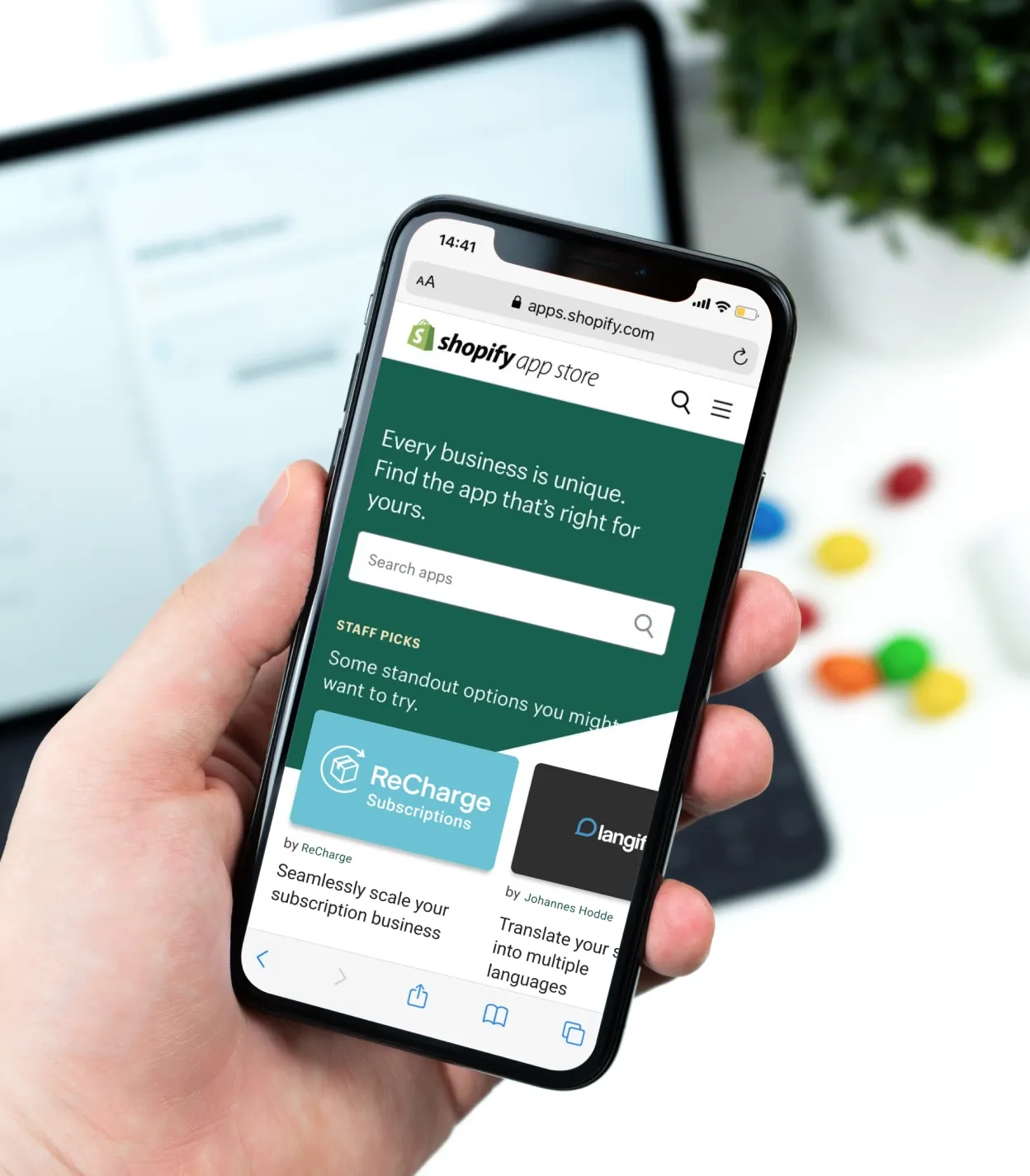
No matter how many sales you generate, if your customers have a bad experience visiting your site, you aren’t getting very far. If people don’t like your website for any reason, they won’t come to you again and may even not complete the purchase. That’s why caring about e-commerce customer experience (CX) is a must-have concern for a successful e-commerce business.
Experience-led businesses have several benefits, including 1.6x higher brand awareness, 1.9x higher order value, and 1.7x higher customer retention rate. By improving customer experience, you will also generate more sales and enhance your brand image to attract new customers and retain the current ones.
To make things right, we are here to reveal the best tips on how to improve e-commerce customer experience and make a great impression on every visitor who lands on your e-commerce website.
#1 Optimize the website speed
According to the Truelist survey, you may have up to 76% of all your sales if losing website visitors on their way to the shopping cart. In this regard, your website speed is one of the main factors for the customer experience for e-commerce, the PwC report states. So, you should work on it to make a better e-commerce website.
To ensure satisfactory website speed, take note of your current server size, database management, and image compression. Also, it’s a good practice to test your e-store speed with online tools, such as Google Page Speed Insights and GTMetrix.
Here are some other useful ways to improve website speed:
- Compress images: High resolution and large dimensions slow your page load time.
- Apply lazy loading: Let your website load only the content that is in customer focus.
- Limit the number of third-party resources: The fewer apps your e-commerce has to load, the faster its speed becomes.
- Accelerate mobile pages: Take proper care of the website's performance on mobile devices.
In addition to accelerating user experience, you’ll get a better chance to get a higher ranking on Google to attract more new website visitors. As our business practice shows, that’s one of the key advantages a website performance optimization solution should bring.
#2 Optimize navigation
When it comes to customer experience in e-commerce, the importance of the navigation system cannot be overstated; it dictates how people interact with your website. Customers shouldn’t click through many pages on your website to find what they want. Yet too often, retailers dump their product catalogs in one place on the homepage or impose an arbitrary categorization scheme that makes no sense for the visitor at all.
Not to repeat the typical mistakes, here are some useful tips to improve navigation:
- Carefully design. Don’t underestimate the power of unique UI/UX design. Make sure you offer a clear and appealing customer journey, competitive with the best e-commerce design practices.
- Make clear CTA buttons. Use simple call-to-action buttons for purchase, sign in or create an account. Your potential customers should find them as quickly as possible to place an order.
- Make payment comfortable. Ensure safe and fast transactions are processed by trustworthy payment systems.
- Simplify checkout. Limit the steps in the checkout process by asking customers only for the most necessary information.
- Improve the convenience. Remember what products have been put in the shopping cart, so your website visitors don't need to check it as they shop continually.
The answer to how to increase customer experience in e-commerce is simple: let your website visitors find what they want fast. Otherwise, they’ll leave your e-commerce store uninterested and frustrated, and you’ll lose the opportunity to sell them your product or service — even if they want what you’re offering!
#3 Add immersive features
When you try to improve customer experience in e-commerce, you need to go all out if you want to make shoppers fall in love with your brand. Such immersive features can range from fun things like GIF-powered product pages, well-timed dynamic ads, or personalization on every visit to practical ones such as access to FAQs and interactive tutorials. What they all have in common is an increased feeling of engagement with the website, which will often result in increased conversion rates.
Here are some of the features we recommend paying attention to:
- Virtual try-on: Allowing customers to try on products virtually can be great for visual learners who want a better idea of how something looks before buying it. It also helps those who don't know what size they wear to avoid purchasing something too small or too large.
- 3D models: Adding 3D models provides customers with more information about a specific item and enables them to see and try the product like in a physical store.
- Videos: These are the easiest way to show how your product works and detail its different usage scenarios. Ask your workers to record or participate in short product videos, just like Zappos employees do to showcase their offerings. You can also make use of Videvo's stock videos to create video libraries featuring all or many of your products.
The main idea behind adding immersive features is to create a personalized experience for each e-commerce website visitor. All the tools we’ve mentioned should facilitate the purchase and handle all the possible customer objections.
#4 Leverage omnichannel experiences
Offering an omnichannel experience creates more options for customers, which in turn boosts customer loyalty and helps you remain competitive with other brands in your field. For example, many consumers prefer purchasing from Amazon because they can order from the site and pick up their package at one of Amazon's many physical stores.
You may not have the same resources as Amazon — but you can learn from their experience and implement something similar.
Here are some good practices to leverage omnichannel experiences:
- Use mixed media: Mixed media helps connect touchpoints, like email and advertising, which can increase conversions.
- Work on consistent branded experience: Each touchpoint should be linked and connected to your branding. For example, it’s good when your website visitors recognize the visuals from your social media posts and marketing materials.
- Integrate POS (point of sale) system: When using the Shopify platform for your e-commerce store, you can integrate a POS system and add a brick-and-mortar store as another sales channel.
To incorporate all e-commerce customer experience metrics, a good start is to establish a digital communications strategy. This way, you take proper care of the platforms where you meet your customers beyond your online store and the messages you deliver to them there.
#5 Engage customers through content
Producing high-quality content with customers in mind will solve your customers' problems and is the best way to engage them. Never forget why e-commerce customer experience matters — clarify customer needs and address them through content that appeals to them in the best way possible.
Here are the ways to improve e-commerce customer experience in terms of content:
- Answer customers’ questions: Your customers will always have questions about your products. That’s why you should work on the knowledge base, introduce a FAQ section, have your own blog, and create video tutorials.
- Provide detailed product reviews: Online shoppers want all the details about your product before buying, ranging from the country from where you took materials to the height, length, and size of the product. Describe all the relevant details about your product to satisfy their needs.
- Show product photos: Mostly, pictures speak louder than words. Include several product photos on your homepage to give potential buyers a good idea of what they'll be getting when purchasing an item from you.
Brands like Gucci add wow-effect elements to their ecommerce experience. For example, recently the brand introduced a new feature that allows customers to send customizable virtual cards, thus, boosting customer engagement.
#6 Simplify checkout
The last obstacles your website visitors see while making a purchase, the more likely they’ll buy your products. That’s why checkout convenience is a must to improve your sales, and your website navigation should do everything possible to make this purchase happen.
Here are the things you can do to simplify checkouts and, consequently, improve e-commerce customer experience:
- Use a universal checkout process: Customers are much more likely to complete the check-out process if they don't have to enter billing, shipping, and payment information for every order or call customer service for help.
- Offer convenient payment options: Customers will like it if they can use mobile payment (like ApplyPay or GooglePay) to make purchases on the go. A good example is ASOS which enables installment payments with Klarna, PayPal, ApplePay, and credit cards.
- Introduce express checkout: Let users buy in one click — or at least make a purchase in a couple of steps. If you can, go for offering them shorter wait times and more flexible delivery times. These measures will enhance the convenience and increase the chance buyers will come back to purchase more.
Offering customers an effortless check-out process is a great way to increase conversions. So let your website visitors see your products, love them, and get them at their doors as quickly as possible!
#7 Create a compelling product copy
A product copy is a written description of a product that helps customers understand what they're buying before they make a purchase decision. In terms of CX, this tool helps create a narrative around the product and gives customers an idea of what they are buying. It also lets them know if there are any special features or information about the product that might be important for them to know before making a purchase.
What makes a good product copy that keeps your audience engaged with your website and provides them with everything they need before completing their order:
- Explain how to use a product: Don’t limit yourself to words while presenting your product. Add some visual and detailed instructions and tutorials in addition to product descriptions — or push the boundaries even further and create a badge system to present your products in Sephora style.
- Highlight its key features: In a copy, describe your product through the lens of why people want it — describe the exact features that will make them want to make the purchase and all the details related to their needs.
- Focus on the selling points: When creating your product description, make sure you talk about the benefits of your product, not just its features. Feel free to reveal any special ingredients or design elements that set it apart from other similar products
Well-written product copies improve the e-commerce customer experience by making your website visitors feel more confident in their purchase decisions and reducing the chance they’ll return your products.
Ask DigitalSuits to audit and improve CX on your e-commerce solution
Constantly improving and measuring e-commerce customer experience is the basis of generating constant sales in the long run. However, to achieve a great result in this domain, you should work on various aspects of your e-commerce website. These include its fundamental features like speed, navigation, and omnichannel experience and polishing details like product copy layout and checkout steps in a customer-focused manner.
If you experience any difficulties in understanding how to improve customer experience in e-commerce, feel free to request our expertise. As a software development company that focuses on e-commerce solutions, DigitalSuits is experienced in building scalable and secure solutions that engage new buyers and leverage your sales.
Contact our team so we can conduct an audit of your tech solution and improve it for better CX.















Was this helpful?
0
No comments yet